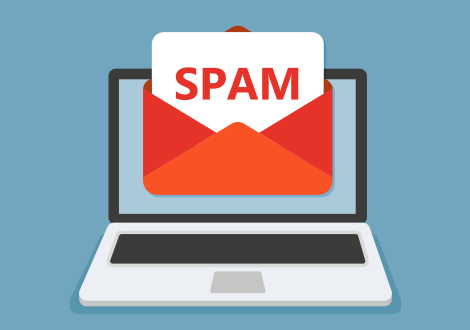Most times, we click on spamming links without even knowing they are spam links which are mostly sent by scammers or hackers in other to either hacked a particular account we own or scam us by making us provide our credit card details on the website where they can get the details for themselves and use it for illegal activities.
However, email services such as Gmail have a spam section where they dump all the emails that are suspected to be a scam but then some of them still have a way of getting into our inbox.
So for you to know if a website or link is safe to click or it’s a spammy link, use the websites mentioned below to check it out.
⇒Join us on Telegram for more Sure and Accurate football-winning tips every day...click here
You can watch this Youtube video to understand how to check if a link is spam or is safe to click.
Website to check if a Link is Spam or Safe to Click
ScanURL

ScanURL helps you stay secure online by alerting you to potentially scammy, questionable, or harmful sites. Using third-party services such as Web of Trust, Google Safe Browsing Diagnostic, and Phish Tank, the service scans for malware, phishing, viruses, and a bad reputation.
ScanURL is an ad-supported service that provides useful information about whether or not you should visit a website.
To use the tool, type the URL you wish to check into the checking field, add a nickname and a comment, and then click the Check this URL button to begin scanning.
Google Transparency Report
Google’s Transparency Report makes use of the company’s Safe Browsing technology to scan billions of connections every day for potentially dangerous websites. Thousands of new hazardous sites are discovered on the web, many of which are legitimate but have been compromised. When a website gets infected with a virus, even if the site owner is unaware of it, this can happen.
Plug a link into the free online tool to see if it’s safe or harmful, and if the link checker identifies an unsafe site, it’ll display a warning. Warnings can also be seen in your browser or on Google Search.
URLVoid
URLVoid is a tool that can be used to “identify potentially dangerous websites.” Simply enter the suspect URL and wait for the site to check it, much like the other tools. If the information has been made public, you’ll find information on the URL and its history, any black ticks against it, and where the site is headquartered.
URLVoid also displays a list of the services it employs to generate its findings, which includes well-known names like Avira, BitDefender, and PhishTank.
URLVoid has a companion service called IPVoid that can scan an IP address. URLVoice also gives APIvoid for developers to design their own link safety checker.
PhishTank
Rather than focusing on viruses, PhishTank warns you about phishing sites.
PhishTank will investigate a URL that you suspect is hosting a phishing operation when you enter it. You’ll receive instant results if the link is already “in the tank.” Otherwise, a tracking number will be provided by the website. Unfortunately, checking a phishing link is not as straightforward as automatically checking malware URLs…
Conclusion
There are other methods and websites you can use to check if a Link is Spam or Safe to Click however, the 4 websites mentioned above are the recommended ones you can run to anytime you want to just if a website is a spam or not.
If you like this blog and the type of content we post, don’t forget to subscribe and also bookmark this website so that you will get updated anytime we post new content.


![[Android] How to edit JavaScript, CSS, JQuery, HTML, XML, PHP, Python on-the-go](https://ccnworldtech.com/wp-content/uploads/2024/02/acode-html-editor-1-348x215.jpg)
